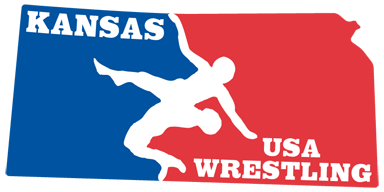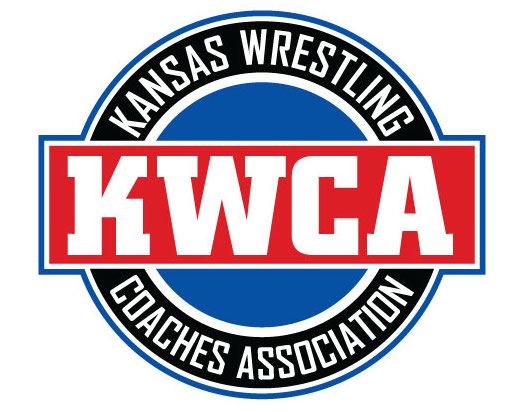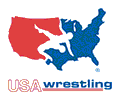My experience talking to some college coaches the APR (implemented in 2003) has been a very important topic when recruiting HS kids. Along with potential talent on the mat, they are looking at potential in the classroom - a student athlete struggling with grades can effect a college teams total number of scholarships in the preceding year.
b]Darrion Caldwell, a sophomore in First Year College and All-American wrestler, said coaches are always reminding players of the importance of academics.
"Our coach stresses it to us every day," Caldwell said. "My freshman year here, wrestling was a big part of the whole APR problem. Since then, APR has been part of daily discussions."
"It's up to coaches to bring in the types of players that are going to succeed at N.C. State," Jordan said. "Before APR, coaches may have been willing to take a chance on academically questionable guys. Now, that just doesn't happen anymore."
Caldwell said APR impacted his chances of being accepted as a walk-on to the football team in August.
"This year, when I tried out to the football team, my times and speed were up to par, but my GPA was not high enough," he said. "Since my grades were kind of low, they were afraid of me hurting the APR so they didn't take me."
Problems for Pack programs While almost all programs at N.C. State have handled APR and the NCAA's requirements well, there have been penalties.
When the 2008 APR report came out, the wrestling team received an immediate penalty after receiving a score of 914 and losing more than one athlete who was ineligible at the time he left the University. [/b]
APR: the athletics report card
By
Published: Tuesday, September 30, 2008
Updated: Saturday, December 13, 2008
When the Academic Progress Rate -- or APR -- began in 2003, the NCAA cracked down on college athletics and forced programs across the country to keep up with the progress of student athletes more than ever before. Now, five years later, teams at N.C. State and across the country have figured out how APR works and have learned how to make sure student athletes make academic progress while at the same time making athletic progress.
Carrie Anne Leger, director of the Academic Support Program for Student Athletes, said sanctions from APR infractions -- which affected NCSU for the first time this year -- make APR an issue within the athletics program on a daily basis.
"Not a day goes by that APR related issues aren't discussed," she said. "There are more conversations going on about academics, about retention and about graduation for our student athletes now than ever before. And it's because of APR."
Athletics Director Lee Fowler said it's great to see progress within programs at NCSU on a year-by-year basis. "Each year, we know whether we're moving toward losing too many kids, or having too many kids not be eligible," he said. "It's a snapshot of each year, and I think it is a very positive thing for college athletics."
Pressure to succeed
Although coaches, administrators and athletes understand APR better now than they did in 2003, the pressure on them remains high.
Baseball coach Elliott Avent said it is the responsibility of coaches and administrators to make certain student athletes focus just as much on academics as athletics, if not more.
"At 20 years old, people don't often think about what their resume might look like after professional sports," Avent said. "That is the job of administration because we are supposed to have the experience and wisdom to lead."
Darrion Caldwell, a sophomore in First Year College and All-American wrestler, said coaches are always reminding players of the importance of academics.
"Our coach stresses it to us every day," Caldwell said. "My freshman year here, wrestling was a big part of the whole APR problem. Since then, APR has been part of daily discussions."
Wrestling coach Carter Jordan said APR influences the way coaches talk to athletes on a daily basis and even the way coaches recruit athletes in high schools.
"It's up to coaches to bring in the types of players that are going to succeed at N.C. State," Jordan said. "Before APR, coaches may have been willing to take a chance on academically questionable guys. Now, that just doesn't happen anymore."
Caldwell said APR impacted his chances of being accepted as a walk-on to the football team in August.
"This year, when I tried out to the football team, my times and speed were up to par, but my GPA was not high enough," he said. "Since my grades were kind of low, they were afraid of me hurting the APR so they didn't take me."
Problems for Pack programs While almost all programs at N.C. State have handled APR and the NCAA's requirements well, there have been penalties.
When the 2008 APR report came out, the wrestling team received an immediate penalty after receiving a score of 914 and losing more than one athlete who was ineligible at the time he left the University.
"There is no undoing it," Jordan said of the penalty. "There were things we should have been paying attention to four or five years ago that would have helped us, but we just didn't know the extent of the impact."
Jordan said his program is in a better position now to handle the problems associated with APR and said coaches must now know the academic situation of recruits before they ever get to Raleigh.
"You have to do your homework," he said. "You have to get to know recruits -- get to know their family to make sure they are going to succeed."
When the report for the 2007-2008 year is released, Jordan said wrestling's APR score will be above the minimum benchmark of 925.
An ever-evolving system While most coaches and programs now know just what APR means and how much it impacts college athletics, some feel the implementation of the system may not have gone as smoothly as it could have.
Avent, whose team reported an APR score of 943 in 2008, said the NCAA should have implemented a system like APR well before 2003.
"It was a long overdue tool that was put in place by people who had the right mindset and understanding of what it means to come to college and get a degree while playing sports," Avent said. "We should have headed toward something like APR a long time ago."
Avent said following the rules within APR proved tough at first because of how quickly the changes came about.
"It was put in kind of quickly," Avent said. "Coaches, administrators and athletes were used to the old way of doing things, and even though people were told about it, there was a poor understanding about what APR was all about. It wasn't until sanctions started being handed down that people started realizing how important APR was."
Leger said APR is more fair now than when the NCAA first implemented it because of nearly annual tweaking of the system.
"APR does change every year because it hasn't been perfected yet," she said. "Over time, some policy changes have been introduced that have been beneficial. It took some time, but APR is headed in the right direction."
Avent agreed the changes have helped, but said he believes additional changes in the future could make APR much more effective.
"This APR package is a very good package, but I'm still not sure if all the right remnants are there for each individual sport," he said. "It will probably be tweaked in years to come."
Leger said as long as everyone keeps the right goals in mind APR will not be a problem at NCSU.
"The goal is for our students to be academically successful, to be retained at the University and to graduate," she said. "If we're always doing things with those three goals in mind, APR will never be an issue."







